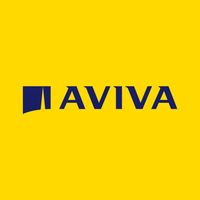Are your insurances truly inclusive? 4 key areas you need to check
Just like any other part of a business, group health and protection insurance schemes should be inclusive, sheltering everybody who works for your organisation under a range of protective benefits.
These schemes can also play a major role in helping lower-income workers by providing a security blanket when tragedy strikes. We define inclusivity as extending the same level of respect to every person working in a company, from their job application right through to the day they leave and providing equal access to opportunities and resources.
Inclusivity has never been an optional extra or ‘nice to have’. It involves hard work. Being an inclusive employer requires constant vigilance and ongoing effort to increase and maintain standards. If inclusivity isn’t prioritised, as well as the negative impact on employees, there is a significant reputational risk to a company.
Here are four important issues to check when you’re managing and communicating health insurance and protection schemes.
1. Communicate well, with everybody
Make sure you’re reaching all of your employees with clear communications about your insurance benefits. This could include simple digital solutions such as descriptors on digital image content to support screen readers used by those with vision impairment and subtitles on film content for those with hearing impairments.
But it’s also worth considering the clarity of messaging to include those who are neurodiverse and from broad socioeconomic backgrounds.
That alone can help with inclusivity, because equal access to information and knowledge is key to preventing feelings of unfairness. Don’t assume everyone is like you – ask for feedback from diverse groups of people on how best to tailor the messages, while ensuring the content is consistent.
Choose a range of channels to ensure that information about your package reaches everyone, whenever and wherever they’re working, using a range of different media channels. Whatever you choose, it’s important to make sure that the messaging you’re delivering is consistent and reflects your company’s inclusive culture.
2. Use langugage suitable for modern lifestyles
In internal emails, brochures and employee websites you’ll probably have plenty of information about the types of benefits you offer as part of your employee insurance package. Make sure the content and language isn’t full of male/female married couple stereotypes. One example of this is the use of gender-neutral pronouns.
Family means different things to different people; children can have different parents. for some, it is a choice not to have children; for many, their friends are their family. If you don’t reflect this, some employees can feel excluded from the benefits you are offering. Ensure that any visual content mirrors today’s multicultural and mixed ability society.
Finally, make doubly sure that employees actually know what they are covered for and when they can claim it.
3. Let employees choose
Encourage inclusivity by putting your workers in the driving seat. In some cases, providing a cost effective group benefits package across a diverse workforce can be expensive and time-consuming. By letting employees choose what they want from a menu of benefits in a ‘flex’ package, you pass the ball back to the workers.
4. Be mindful of age exclusion issues
There’s a stereotype that older workers will consume more health-related benefits than fit and healthier younger ones. While the Equality Act 2010 protects individuals from discrimination based on age (and other protected characteristics), there is a limited exception whereby employers can choose not to offer insurance benefits to employees who are either 65 or of state pension age (whichever is greater).
If you choose not to offer certain benefits to older employees, you should seek legal advice to ensure you’re not being discriminatory.
Furthermore, as this exception only relates to insurance or related financial services, you should still ensure that other company policies and processes are inclusive to all age groups and life stages.
To sum up, inclusion is where people’s differences are valued and used to enable everyone to thrive and gain the same access to opportunities and resources. An inclusive workplace has fair policies and practices in place and enables a diverse range of people to work together effectively.
It’s about inviting diverse groups of people to play a role in defining the company’s culture and the workplace benefits they need. And that includes group health and protection insurance schemes.
For more information, read our guides on Embracing diversity, equity and inclusion and Making wellbeing work for everyone.
Supplied by REBA Associate Member, Aviva
Our purpose is to be with you today, for a better tomorrow.








